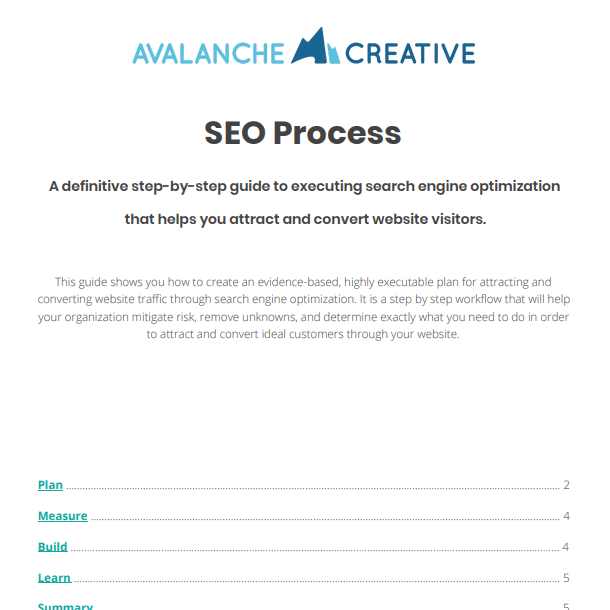Why you need a writing style guide + 5 steps to get started
Category: Search Engine Optimization | Tags: Content Strategy, avalanche email, content marketing
Learn More and Subscribe to The Avalanche Weekly Email
Today I’m going to talk about writing style guides and why they matter.
This email comes as motivation from this blog post written by our very own Deanna Grogan.
Opening a Google Doc and typing is easy. Writing a piece of content that is both meaningful to your target audience and your organization is hard.
A writing style guide makes accomplishing both a little more doable.
What is a Content Writing Style Guide?
A style guide, also called a style sheet or style manual, is a document containing all of the rules and guidelines for the creation and use of certain content.
They outline how companies communicate through their visual brand—logos, colors, typography—as well as how they communicate through the written word.
Why They Are Important
Creating content that helps your business scale is tough work. Don’t be fooled. You can’t control and scale your efforts without great people and great processes.
A writing style guide is a crucial component to the process that the people involved need in order to stay on the same page (literally).
When it comes to written words, everyone has an opinion:
- The WRITER doesn’t want to follow the SEO’s structure.
- The SEO doesn’t want to “add SEO” to a written piece of content.
- The OWNER thinks the content needs to be more about the company.
This list could go on, but you get the idea.
A company content writing style guide defines all the many nuances of writing and seeks to get buy-in from all stakeholders so that content can move forward without a vicious internal tension that prevents an organization from achieving meaningful results.
We create these early on in our collaboration with clients in order to mitigate the many issues that arise with creating content and to increase the likelihood that content will perform well.
How to Create a Style Guide in 5 Easy Steps
Visit this link to get more context on each step.
- Choose a Formal Style Manual as a Base
- Add In-House Spelling & Grammar Guidelines
- Describe Company Voice
- Address Industry Specifics
- Incorporate SEO Standards
Share this article:
The Avalanche Email: Fun. Simple. Educational. No Selling.
Learn Result-focused SEO & Content
Join over 2,272+ others who get one email every Wednesday with simple instructions on how to get more website traffic and leads through SEO and content marketing. (Learn more about the email)
Keep Learning
How To Show Up in Gemini (And Win More Local Jobs)
Show up in Gemini when homeowners search for landscaping services. Build the right signals on Google and your website to win more qualified local jobs.
How to Run Google Ads for Landscapers: A Complete Guide
Learn how to set up Google Ads for landscapers, attract qualified leads, and win more local jobs with this step-by-step guide.
🏔️ Watering > Planting New Seeds
Your next marketing win may already be on your site. Learn how to optimize existing pages for better rankings, traffic, and results.
The Recipe vs. The Meal
Your customers buy the experience, not the product. Discover a simple way to shift your message from ingredients to the full meal.
🏔️ Hook, Line, and Sinker 🎣
Use this fishing framework to turn your posts into stories that capture attention, create tension, and inspire action from your audience.
🏔️ Avoid Everything That Doesn’t Move You Forward
Stop chasing shiny tools and refocus on what moves your marketing toward the end zone. Simple steps to cut noise and make steady progress.




